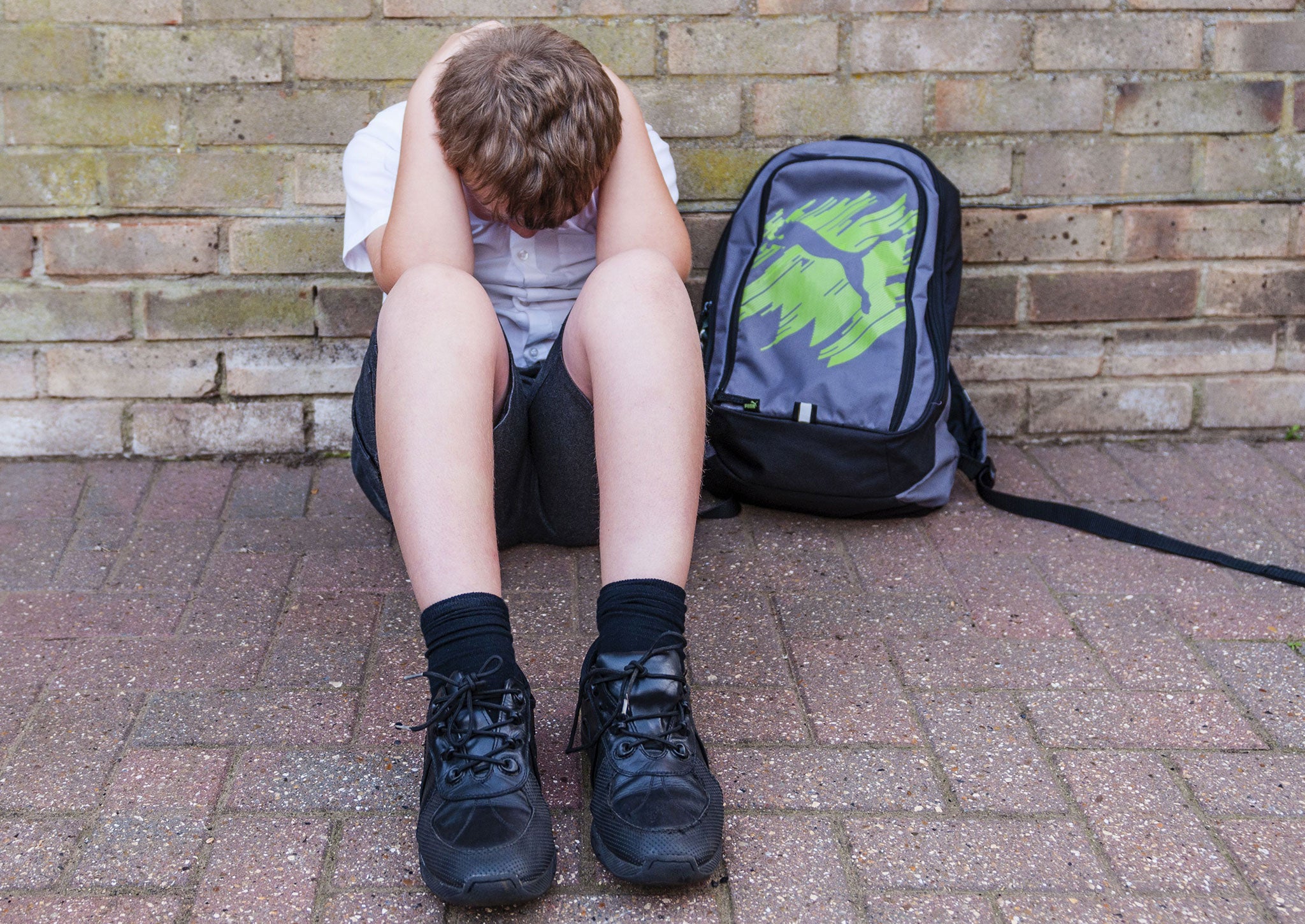Self-harm among children is on the rise, but it's not just the victims who we need to support
By offering help to families and parents we can help tackle this shocking problem

There’s something deeply distressing about the idea that anyone self-harms. Because not only is it a sign that the individual concerned is in trouble: no, worse than that – much worse really – is that it shows they feel powerless to do anything about it. Their only recourse is to punish themselves, because their own body is the only outlet for their frustration and unhappiness.
That anyone would feel like that in our society is lamentable: life is never about the bad things that happen – they’re a given – rather it’s always about our ability to deal with them. So what’s especially depressing about this week’s news on self harming is that it’s up by so much, and that younger and younger children are succumbing to it.
According to just-published NHS figures, the incidence of self-harm among children as young as 10 is up by 70 per cent in just two years. The number of children aged 10 to 14 treated in hospital after deliberately harming themselves rose by a colossal 2,700 since 2012. In the same period, there was an increase of 23 per cent among teenagers aged 15 to 19.
They’re alarming figures, and they tally with a trend we’re going to hear more and more about in the next few years, which is the perilous state of our children’s mental health. We already have other indicators that should be causing concern.
Earlier this year new figures from Childline showed a rise of 87 per cent in calls from young people about online bullying; there was also a 33 per cent rise in the number of youngsters who reported feeling suicidal. Calls about self-injury, not surprisingly given the new NHS figures, was also up, by 41 per cent.
Mental health problems are a complex issue, and there is no easy answer to the big question at the heart of the new figures, which is: “Why?” Genetics and a family history of depression are often involved; but they are not the whole story, and especially not in the cases of this kind of rise. We have to look at pressures on teenagers: the stresses that push them over the edge and then, in the case of self-harming, make them feel they are alone in their suffering.
Many commentators are pointing their fingers at the internet, and the social media culture; it’s the “Always-on” culture, as Lucie Russell of YoungMinds points out, and it means today’s youngsters have nowhere to hide.
When I was a teenager, my bedroom was my sanctuary at the end of a tough day in the playground, or after unpleasant taunts on the bus home: today, my own younger daughters, 15 and 12, never really say goodbye to their friends, because they never actually leave them. Life is a seamless conversation or a seamless procession of fights and taunts with their mates, from the moment they awake to the moment they go to sleep. And if their friends spell problems – and often, for teenagers, they do – there is no respite, no hiding place.
So that’s part of the story: but it’s not the whole tale. I recently did some research on self-harm and attempted suicide among teenagers, and one of the things that struck me was that every youngster I was put in touch with had a turbulent family history. Nothing unusual about that, of course: what is family life, if not turbulent? But something that’s different about families today is that parents are often more caught up and distracted by their own emotional and psychological issues than in the past.
One of the most important things we do, as parents of teenagers, is to ensure our own problems are on the back burner, because our kids need the focus to be on theirs. So having parents who are sidetracked by relationship difficulties, or the stresses of a new relationship, or difficult issues to do with their own state of mental health, means children who may not find a port in a storm when they need one. The port itself, in other words, is under attack from another hurricane, and children can sometimes find themselves paddling their own ship and feeling very alone.
So it’s not just that our kids’ lives are becoming busier and busier; it’s that our lives, as parents, are becoming busier and busier too. The scariest thing for children isn’t that they have problems, or lose it, or don’t know what they’re going to do next; it’s when we, the adults they depend on, seem to lose it ourselves. Which is why young people’s mental health is not so very far removed from adult mental health; and sorting out our own ways of dealing with the “Always on” culture, and learning how to juggle and how to keep ourselves on top of our lives, will in turn help our children.
Where families are going through break-up or other difficulties, any support given to the parents will in turn help the children; where parents are unsupported, by the same token, children will be not just up against it, but with that sense of helplessness that often underpins an episode of self-harm.
We need to heed these new figures, because our kids’ mental health isn’t going to improve unless we do something; and we need to act fast, because no child of 10 should ever feel so low and so powerless that she takes a razor blade and uses it to cut her skin.

Join our commenting forum
Join thought-provoking conversations, follow other Independent readers and see their replies